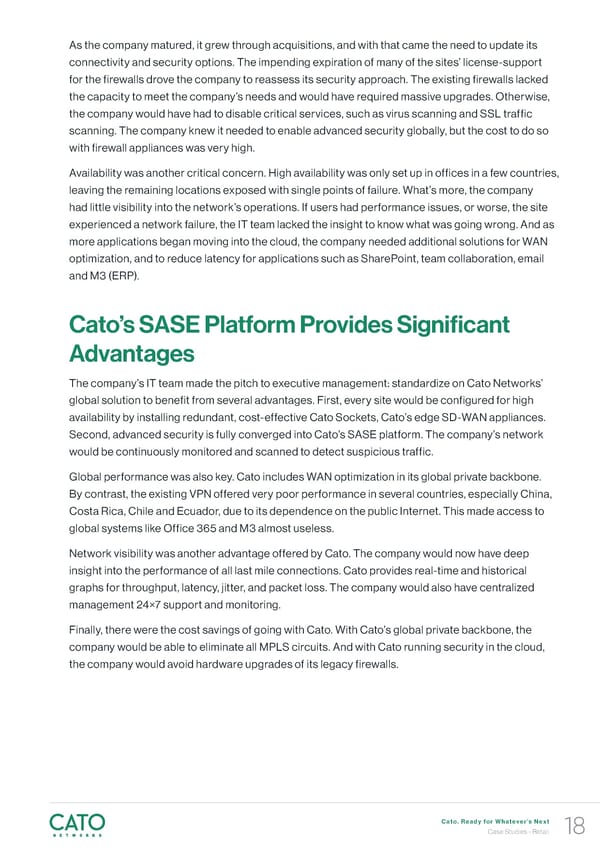As the company matured, it grew through acquisitions, and with that came the need to update its connectivity and security options. The impending expiration of many of the sites’ license-support for the firewalls drove the company to reassess its security approach. The existing firewalls lacked the capacity to meet the company’s needs and would have required massive upgrades. Otherwise, the company would have had to disable critical services, such as virus scanning and SSL traffic scanning. The company knew it needed to enable advanced security globally, but the cost to do so with firewall appliances was very high. Availability was another critical concern. High availability was only set up in offices in a few countries, leaving the remaining locations exposed with single points of failure. What’s more, the company had little visibility into the network’s operations. If users had performance issues, or worse, the site experienced a network failure, the IT team lacked the insight to know what was going wrong. And as more applications began moving into the cloud, the company needed additional solutions for WAN optimization, and to reduce latency for applications such as SharePoint, team collaboration, email and M3 (ERP). Cato’s SASE Platform Provides Signi昀椀cant Advantages The company’s IT team made the pitch to executive management: standardize on Cato Networks’ global solution to benefit from several advantages. First, every site would be configured for high availability by installing redundant, cost-effective Cato Sockets, Cato’s edge SD-WAN appliances. Second, advanced security is fully converged into Cato’s SASE platform. The company’s network would be continuously monitored and scanned to detect suspicious traffic. Global performance was also key. Cato includes WAN optimization in its global private backbone. By contrast, the existing VPN offered very poor performance in several countries, especially China, Costa Rica, Chile and Ecuador, due to its dependence on the public Internet. This made access to global systems like Office 365 and M3 almost useless. Network visibility was another advantage offered by Cato. The company would now have deep insight into the performance of all last mile connections. Cato provides real-time and historical graphs for throughput, latency, jitter, and packet loss. The company would also have centralized management 24×7 support and monitoring. Finally, there were the cost savings of going with Cato. With Cato’s global private backbone, the company would be able to eliminate all MPLS circuits. And with Cato running security in the cloud, the company would avoid hardware upgrades of its legacy firewalls. Cato. Ready for Whatever’s Next Case Studies - Retail 18
 Cato Networks Retail Page 17 Page 19
Cato Networks Retail Page 17 Page 19